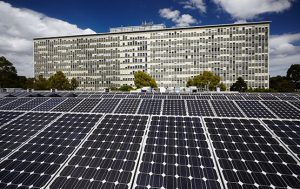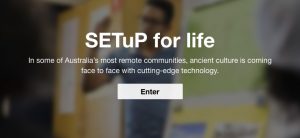Microgrids: Cheaper, cleaner, reliable energy for remote communities
ARENA funding is now available for regional and remote First Nations communities to have a say and share in the benefits of Australia’s transition to a renewable future.

Around 500,000 people, or two per cent of Australia’s population, live in remote areas without a connection to the electricity grid.
If you are in that situation, you are what is known as “off grid”.
For some, off grid is a term to describe a lifestyle choice to live self-sufficiently. But in many parts of regional and remote Australia, off grid is a fact of life.
In those areas, electricity supply is most often provided by expensive and unreliable diesel generators. Natural events, such as floods, can leave isolated communities without diesel fuel and spare parts for weeks or even months.
ARENA has opened a funding program of $75 million specifically for regional and remote First Nations communities.
The First Nations Community Microgrids Stream and the Regional Australia Microgrids Pilot Stream form the Regional Microgrids Program with a total funding pool of $125 million.
ARENA CEO Darren Miller said: “Remote communities relying on fossil fuels like diesel have unique challenges in transitioning to renewables. This new funding will help overcome barriers to broader deployment of microgrid solutions.”
The funding, Mr Miller said, will help First Nations communities access renewable energy and build on ARENA’s ongoing work in renewable energy microgrids.
What are microgrids?

The first thing to note is that microgrids are not a new idea. The first public electricity systems in Australia, starting with the regional NSW town of Tamworth in 1888, were all, effectively, microgrids.
The second thing is, not all microgrids are remote; some connect to bigger networks. For instance, essential services and military facilities often have their own diesel-powered emergency microgrids in case the main network goes down.
What is new, is the ready availability of renewable energy sources.
There is no internationally agreed definition of what a microgrid is, or even its size.
In general though, a microgrid must be capable of working in isolation from the main electricity grid. Nowadays, a microgrid should reliably integrate, coordinate and optimise various local energy resources, such as solar panels, diesel, batteries and other forms of storage.
In Western nations, microgrid power outputs range from hundreds of kilowatts to a few megawatts in power output. In developing nations, where energy use per household is much smaller, it’s more like tens of kilowatts.
Why use microgrids?

ARENA backs the development of regional and remote microgrids because they offer a pathway to a renewable energy future.
Some of the advantages of renewable energy-powered microgrids for remote communities in Australia include:
- coordinating local energy sources, such as multiple household rooftop solar panels;
- increased resilience and reliability of supply;
- cleaner energy supply;
- mitigating the effects of natural disasters, such as bushfires, floods or cyclones.
ARENA has in the past supported several remote microgrid projects and programs. Projects have included Lord Howe Island in the Tasman Sea, and King Island and Flinders Island in Bass Strait.
What is the application process?
Applications to both Streams will be assessed in two stages, with initial Expressions of Interest followed by Full Applications.
Microgrid projects under the First Nations Community Microgrids Stream will progress in consultation with Aboriginal and Torres Strait Islander groups, First Nations renewable energy experts and state and territory governments across Australia.
A broad range of stakeholders, including the National Indigenous Australians Agency (NIAA) and other First Nations group representatives have helped develop the program guidelines.
Both Streams of the program will aim to resolve remaining barriers to final investment and full deployment of microgrid solutions.
Mr Miller said: “It’s vital we make sure Aboriginal and Torres Strait Islander people living in remote communities are able to participate in the electricity transition and share in the benefits of Australia’s renewable future.”
“ARENA’s strong track record in supporting the deployment of complex and emerging renewable energy projects means we are well placed to work with developers and First Nations communities to bring the energy transition to remote Australia,” he said.
Applications are now open. The program runs until December 2025 or funds are exhausted.
For more information about the Regional Microgrids Program, including eligibility and how to apply, please visit the ARENA funding page.

ARENA